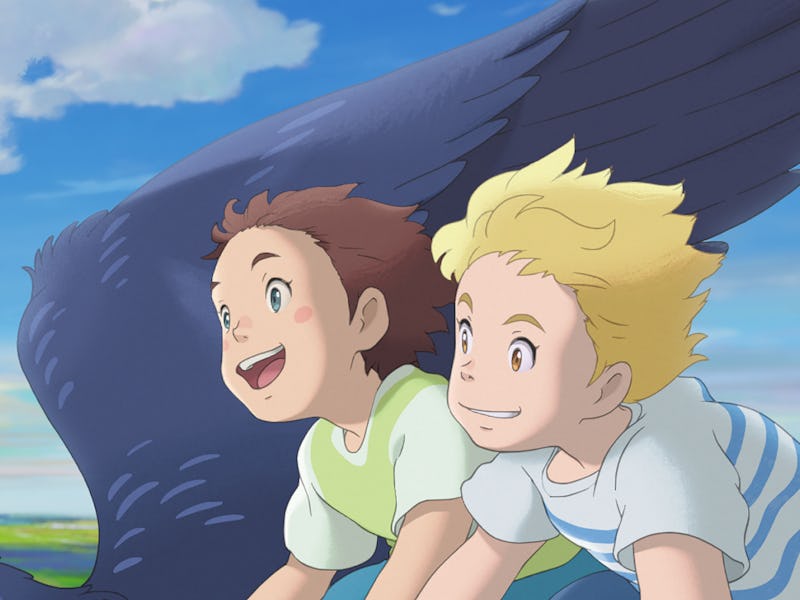The Imaginary is So Close to Being Great
Spirited Away animator Yoshiyuki Momose directs an enchanting, but lightweight, fantasy adventure.

What happens to your imaginary friends when you grow up?
The Imaginary, the charming new animated film from Studio Ponoc (a new-ish anime house full of ex-Ghibli talent), suggests they don’t disappear, they just... go somewhere else. That somewhere else is a library where all the abandoned imaginary friends of the world gather to take safe haven amongst others like them, and protect themselves from a mysterious man that seems to be stalking and eating them.
Except, Rudger wasn’t abandoned or forgotten by his person. Instead, his creator Amanda has been run over by a car and lays comatose in a hospital, her fading spirit causing Rudger’s very existence to be endangered. It’s only when he’s lead by talking cat to this library that he’s able to stop from disappearing — but he soon learns that the man who caused Amanda’s accident may be the mysterious enemy of the Imaginaries, and his eyes are set on Rudger.
Directed by Yoshiyuki Momose, whose animation credits on Hayao Miyazaki’s Spirited Away have been a large part of the marketing for this movie, The Imaginary certainly feels like a cousin to Studio Ghibli movies. It’s sweet. It’s whimsical. It’s got dazzling visuals and jaw-dropping fantastical moments that tip over into phantasmagoria. And it’s got a deeper emotional undercurrent that speaks to greater themes of grief and growing up. But while the film boasts some truly impressive animation from Studio Ponoc, whose last film Mary and the Witch’s Flower was also similarly beautiful, The Imaginary’s biggest emotional moments never hit hard enough.
The film comes from the point of view of an imaginary friend named Rudger, who is only a year old when Amanda gets into her accident. In that year, he’s had the most wonderful time going on imaginary adventures with his young creator, who often squirrels herself away into her attic to embark on quests on top of giant eagles or thrilling snowmobile races down treacherous mountains. Her imagination knows no bounds — and for that, she’s attracted the attention of Mr. Bunting, a creepy old man always accompanied by a pale, ghostly girl. Bunting is the mysterious enemy of the Imaginaries who has spent centuries hunting them down to feed on their imaginary spirit to keep his own Imaginary alive. It’s when Amanda is trying to protect Rudger from Mr. Bunting that she gets into her accident, kicking off the events that will separate Rudger from Amanda and send him whirling into the expansive world of the Imaginaries.
The Imaginary delivers on stunning visuals.
The Imaginary is at its best when it delves into its darker elements like, the unsettling Mr. Bunting, whose bespectacled appearance and colorful floral shirts mask something altogether sinister; or his demonic Imaginary companion, who is designed like she just stepped out of the VHS from The Ring and is responsible for the handful of jump scares throughout the movie. The film also feels like it barely brushes the surface of its interrogation of grief, which acts as an underbaked thematic thread throughout the movie.
But its scattered plot, in which Rudger befriends a bunch of fellow Imaginaries and sets out into the world with them, distracts from some of these darker moments, making the film feel tonally imbalanced. It makes one wish for a bolder film, one that is not afraid to unsettle and challenge. But maybe it’s okay that The Imaginary is content to linger in its cozier moments. Perhaps anything more is better left to the imagination.